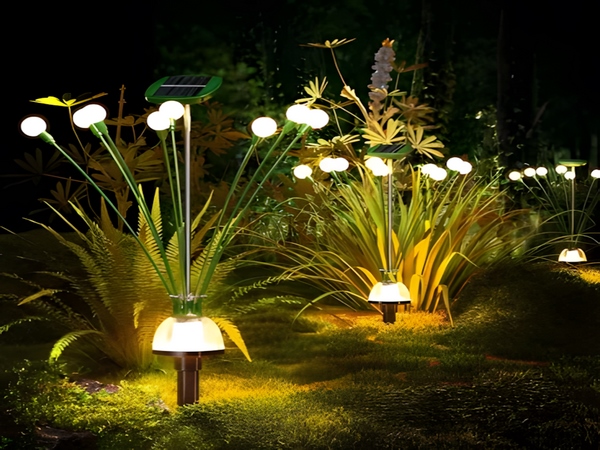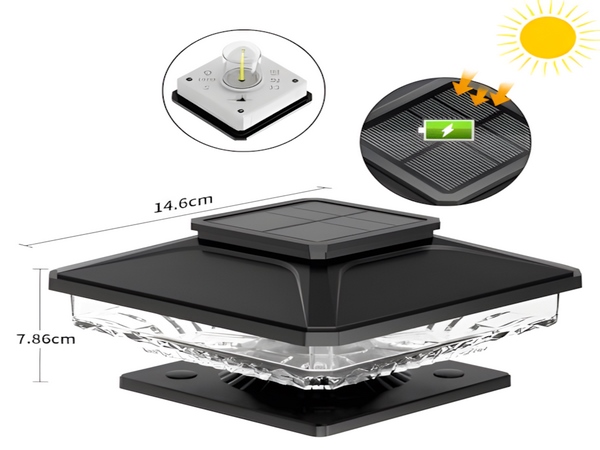
Solar street lights receive light energy through solar panels during the day, converting it into electrical energy stored in batteries. At night, they convert the electrical energy back into light energy, illuminating the way for pedestrians. The rechargeable battery may seem unassuming, but its impact is significant. So, which type of lithium battery is better for solar street lights? Let’s take a look!
Compared to the old lead-acid or gel batteries, the commonly used lithium batteries today have better energy density and power, making them easier to charge quickly and deeply discharge. They also have a longer lifespan, providing a better lighting experience.
However, not all lithium batteries are the same. Today, we will examine their packaging forms to see their characteristics and which type is superior. The common packaging formats are cylindrical winding, square stacked, and square winding.
One, cylindrical winding
This refers to the cylindrical battery, a classic battery configuration. The cell mainly consists of positive and negative electrodes, separators, positive and negative current collectors, safety valves, overcurrent protection devices, insulating components, and casings, with early versions primarily using steel casings and many modern versions using aluminum.
In terms of size, this type of battery mainly includes the 18650, 14650, and 21700 models, with the 18650 being the most common and technically mature.
Advantages: The history of cylindrical batteries is well-established, achieving a high level of standardization. This makes it easy to implement unified standards in the industry. The automation level of cylindrical battery production is higher than that of other types, ensuring efficient production and consistency, while also reducing production costs.
Additionally, cylindrical batteries have better mechanical properties compared to the other two types, displaying the highest bending strength for similar sizes.
Disadvantages: For solar street lights, a single cell is often inadequate and requires a battery pack to function. The cylindrical shape has low space utilization and issues with radial heat conduction, leading to temperature distribution problems. In these environments, the likelihood of diverse characteristics among many cells increases.
Moreover, many cylindrical batteries use steel casings, which results in added weight when assembled into a battery pack, limiting potential energy density increases.
Two, square winding
This battery cell mainly consists of a top cover, casing, positive and negative plates, separators, insulation components, and safety devices. It is designed with needle safety protections (NSD) and overcharge protections (OSD), with early versions primarily using steel casings, while aluminum casings have become mainstream.

Advantages: Square battery packaging has high reliability and utilizes space more effectively. Energy efficiency is higher, and for similar dimensions, it is lighter than cylindrical batteries while having a higher energy density. The structure is simpler, making expansion more convenient. This type is suitable for increasing individual cell capacity to boost energy density.
The large capacity of individual cells simplifies system composition, allowing for one-by-one monitoring. The design incorporating NSD and OSD enhances safety, while the simpler system structure leads to improved stability.
Disadvantages: These batteries can be customized according to specific needs (primarily size), leading to a lack of uniformity in models across the market. This inconsistency complicates standardization of manufacturing processes, resulting in variable battery quality.
The level of automation in production is also relatively low, with significant variance among cells. When forming battery packs, issues may arise if the pack’s lifespan is significantly lower than the lifespan of individual cells.
Three, square stacked
Commonly referred to as soft-pack batteries, these batteries feature a basic structure similar to the above two types, consisting of positive and negative electrodes, separators, insulating materials, positive and negative tabs, and casings. Unlike the winding type, the stacked battery comprises multiple layers of electrodes.
The casing is primarily made of aluminum-plastic film. This material structure has a nylon outer layer, aluminum foil in the middle, and a heat-seal layer inside, with adhesive bonding each layer. This material offers good ductility, flexibility, and mechanical strength, and performs excellently in barrier and heat-sealing properties, as well as being resistant to electrolyte and strong acid corrosion.
Advantages: Soft-pack batteries are thinner due to their stacking manufacturing method, achieving the highest energy density and typically maintaining a thickness of less than 1cm. They offer superior heat dissipation compared to the other two types and are approximately 40% lighter than steel-cased lithium batteries and 20% lighter than aluminum-cased batteries, for the same capacity.

The electrodes are plentiful, with flanges attached to the tabs, ensuring even current density distribution across the electrode plates. During charging and discharging, heat distribution is even, and the design is thin, allowing for easy assembly into modules and battery packs. This form also flexibly adapts to different spaces, not limited to square shapes.
Disadvantages: The casing of soft-pack batteries is not as strong as those made with aluminum or steel, making them heavily reliant on modular technology. Over time, the reliability of aluminum-plastic film encapsulation is harder to ensure; the battery structure is softer, potentially causing high contact resistance between electrodes that must be addressed at the module or battery pack level, increasing technical complexity.
Like square batteries, soft-pack batteries can adapt to different spaces but struggle with standardizing manufacturing processes, leading to inconsistent quality.
The consistency of the batteries is also lacking. If batteries operate in poorly insulated or high-temperature environments, it can lead to significant temperature increases and the formation of “hot spots” within the battery pack, posing safety risks.
In summary:
1) Cylindrical batteries (cylindrical winding) generally use steel casings, with some aluminum. The technology is mature, small in size, flexible for assembly, low cost, and consistent. However, they have poor thermal design post-assembly, are heavier, and exhibit lower energy density.
2) Square batteries (square winding), typically employing steel in early designs but now mostly aluminum. They have good heat dissipation, are easier to assemble, reliable, safe with explosion-proof valves, and have high hardness. However, costs are high, models vary, and standardization of processes is challenging, making this one of the mainstream technologies.
3) Soft-pack batteries (square stacked) use aluminum-plastic film as the outer packaging. They are flexible in size, have high energy density, are lightweight, and exhibit low internal resistance. However, their mechanical strength is weaker, sealing processes are challenging, assembly structures are complex, thermal design is poor, they lack explosion-proof devices, are prone to leakage, have inconsistent quality, and are costly.
The above information about which type of lithium battery is better for solar street lights is shared here. We hope this article is helpful. If you have any other questions regarding solar street lights, feel free to reach out for discussions.



